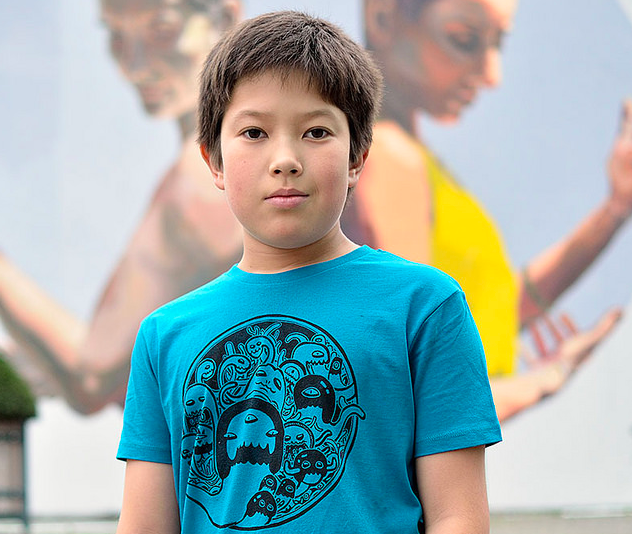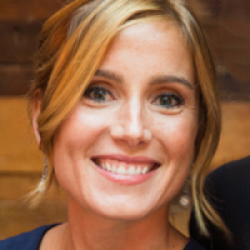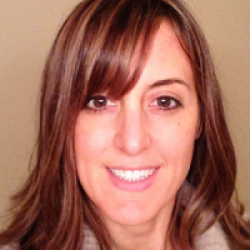
In elementary school, math is tangible and authentic. You count money or look at what fraction of a pizza you have left. You subtract things that are taken from you. Once students reach middle school, math loses its tangibility, moving from concrete to abstract. At the same time, it can lose its relevance in the real world. Teachers often wonder if they can make Project Based Learning relevant in a math classroom. A teacher I work with designed and recently implemented a project that met this goal.
Erin Salvucci is a middle school math teacher at Westtown School in West Chester, Pennsylvania. She has a passion for teaching social impact and equity. This summer at a Buck Institute PBL workshop, Salvucci set out to create a PBL unit that not only teaches her students about linear equations and cost analysis, but also about social and environmental impacts. Her project’s driving question was, “What does your shirt really cost?”.
The process began with backwards mapping. The key knowledge and understanding 8th grade algebra students would learn had to be at the heart of this project. Students had to be able to:
- graph and write linear relationships given a rate of change and y-intercept.
- find and analyze the solution to a system of equations
- analyze and defend monetary costs and profits based on their mathematical data
- provide and defend social and environmental costs and impacts based on their research
- present this information graphically.
For this project, dubbed “Shirts Happen,” students were challenged to create a T-shirt they could sell and design. Throughout the project students considered cost and profit margins, purchasing options, and the impacts (both social and environmental) of the companies they would use for their project. They conducted interviews and Internet research. As they tried to balance keeping costs down with making a profit, they considered the human and environmental impacts of the cheapest products for their business.
How does this impact the Earth and the people making the shirts? As part of their sustained inquiry, students were asked, “Where do your clothes come from?” Each student was asked to check the clothing label on the clothes they were wearing. Groups mapped this information and then combined the data for the classroom. It turned out that a lot of clothes came from Bangladesh.
Added Layer: Social & Environmental Impacts
By exploring where clothes come from, a new layer was added to the project. The social impact of wages was introduced to students with Spent, a game that simulates living wage scenarios. They began to learn more about the difference between a living wage and minimum wage through videos, articles, and conversations, including: Waging a Living, Sweating for a T-shirt, and The True Cost. Students created graphs of living wages and minimum wages and wrote equations for living wages and minimum wages. (For more information on living vs. minimum wage read, Rethinking Mathematics, Teaching Social Justice by the Numbers, by Eric Gutstein and Bob Peterson).
Part of the sustained inquiry in the project calendar focused on environmental impacts of a shirt. Students were introduced to the life cycle of T-shirts through The Life Cycle of a T-shirt and Planet Money Makes a T-shirt. The class discussed environmental impacts of dyes. Kara Mangat, a design engineer from the store Anthropologie, came to talk to students about her job engineering designs from sketch to product. She spoke about how her company chooses fabric and clothing factories and how they build relationships with those factories and workers.
Voice & Choice, Critique & Revision, Reflection
Throughout the project students were given agency to choose what type of T-shirts to design, where/how they will have them made and how they will sell them. Their business plan and shirt design are a result of their group’s voice and choice. The project required them to show cost analysis and consider overall impacts on all parties involved in their potential business. Students brainstormed ideas from the beginning and continually reviewed and edited their ideas through peer and teacher reviews. Students presented their personal ideas in a gallery walk peer review and were able to team up with peers after reviewing these ideas.
Reflection happened daily in students’ math journals. They also reflected in group discussions after watching videos, reading articles, playing learning games/simulations and learning about functional relationships between two variables.
Public Presentations
Students pitched their business plans and cost analysis to students and teachers from our school community. A grant from the school’s Innovation Fund will finance the winning project idea and allow students to compete for a $500 start-up fund. After the presentations, students reflected on the audience feedback. Those willing to put their time and energy into following through with their proposals will have the opportunity to join other groups and present new information they learned. Students who receive the grant money will present their experience to the committee that oversees the Innovation Fund.
Key Takeaways
Project leader Salvucci says, “I learned that the process is much more important than the product. The learning that happened behind the scenes in the classroom could not be summed up in their three-minute presentation. Whatever shortcomings the presentations had, students emerged from the project understanding their impact as consumers, their ability to be entrepreneurs, and the everyday implications of math skills and their important relationship to seemingly disparate disciplines.”
Other takeaways were to invite more experts into the classroom, and schedule more time with adults to review students’ ideas, as this feedback was paramount in the students’ growth. The entire Project Based Learning process is iterative. Therefore, tweaking and reflection will continue through many iterations of this project. However, helping students to understand higher level math concepts as it relates to them in the world will remain at the heart of this project.
Want to learn more about PBL? Check out our books.
Register now for PBL World 2024.


